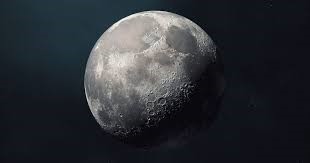Description

Disclaimer: Copyright infringement not intended.
Context
- According to a recent study, the moon is around 40 million years older than previously assumed.
- This discovery, based on lunar dust gathered during the Apollo 17 mission in 1972, has ramifications for our knowledge of the solar system's past.
- For the time being, Apollo 17 is the last human mission to the moon, with astronauts Eugene Cernan and Harrison Schmitt becoming the last men to walk on the moon.
Details
Recent Findings
Reevaluation of the Moon's Age:
- According to the study, the Moon is around 40 million years older than the prior estimate of 4.425 billion years.
- Its formation is now thought to have occurred roughly 46 billion years ago, placing it in close proximity to the early history of our solar system.
Atom Probe Tomography (APT):
- The researchers used an advanced technique known as APT to analyze lunar samples at the nanoscale level.
- APT enabled a more detailed analysis of lead clumping in zircon crystals, which contributed to determining the age of the Moon.

The Scientists Reanalyzed Zircon Crystals:
- The scientists reanalyzed crystals from lunar sample 72255, which contained 4.2-billion-year-old zircon.
- As the oldest material known to exist on Earth, geologists believe it contains significant information regarding planetary formation, particularly the genesis of the Moon.
Giant Impact Hypothesis:
- The findings confirm the gigantic impact hypothesis, which proposes that a massive object dubbed Theia, probably the size of Mars, impacted Earth during its formation, resulting in the birth of the Moon.
- The research supports the notion of a Lunar Magma Ocean, which explains the Moon's interior makeup.
Earth-Moon Age Comparison:
- The Earth is believed to be between 4.5 and 4.6 billion years old.
- At 4.46 billion years old, the moon is barely a little younger.
- This comparison contributes to a better understanding of our solar system's early history and the Earth-moon relationship.

Facts about Zircon Dating:
- When zircon crystallizes, it includes uranium, which decays to lead over time.
- The quantities of uranium and lead in zircon can be determined using highly sensitive measuring equipment.
- It is therefore a straightforward computation to establish how much time has passed since the lead produced from the uranium decay.
|
PRACTICE QUESTION
How does the Moon's origin and evolution contribute to our understanding of Earth's geological history? (150 words)
|
















